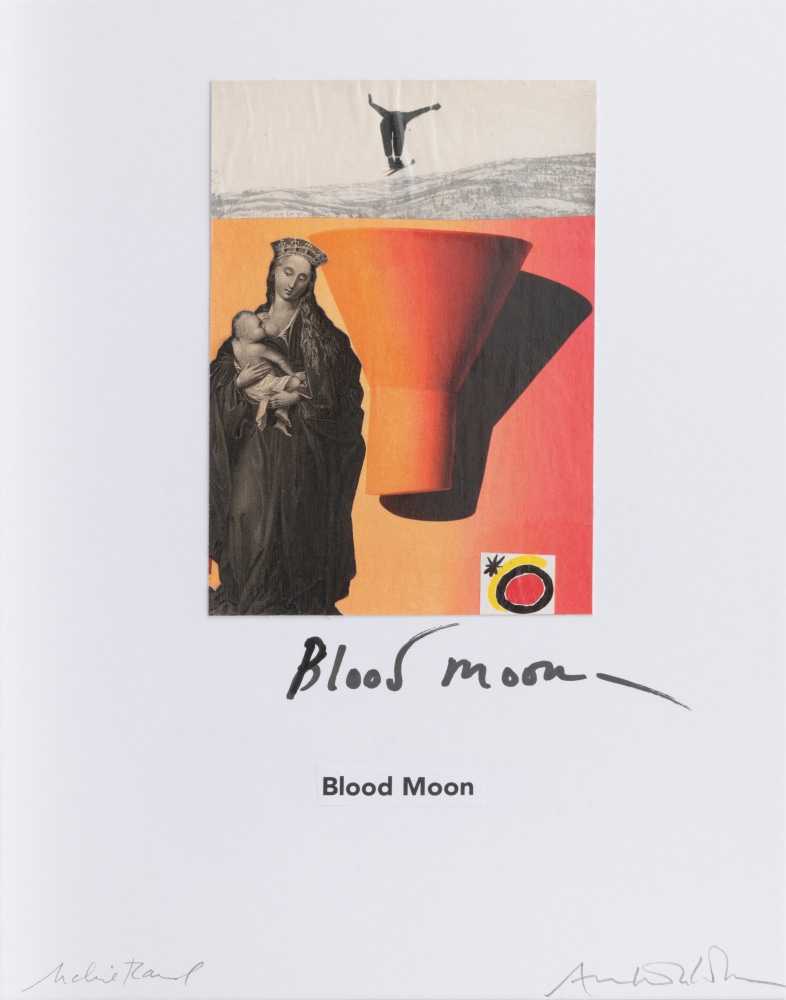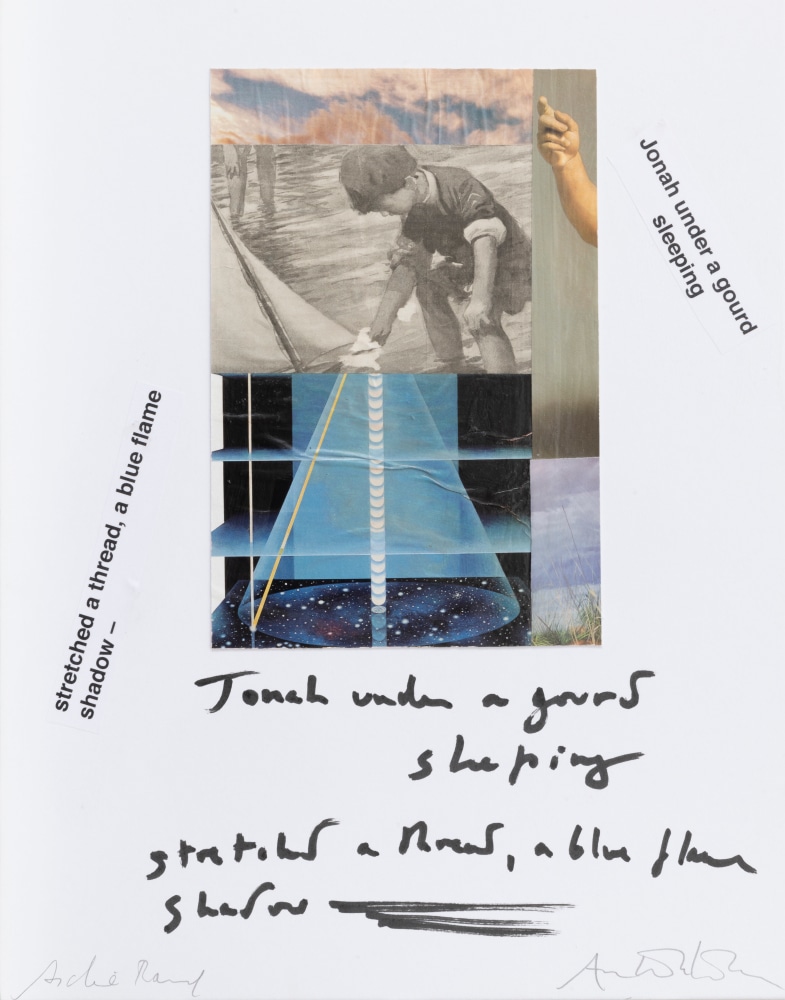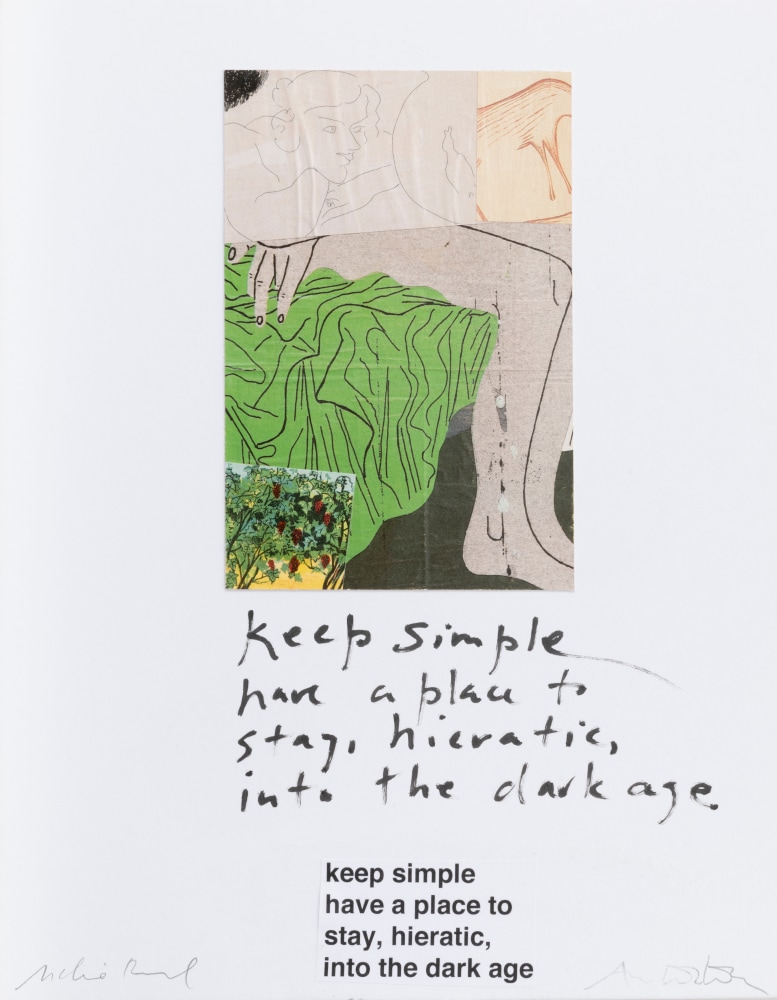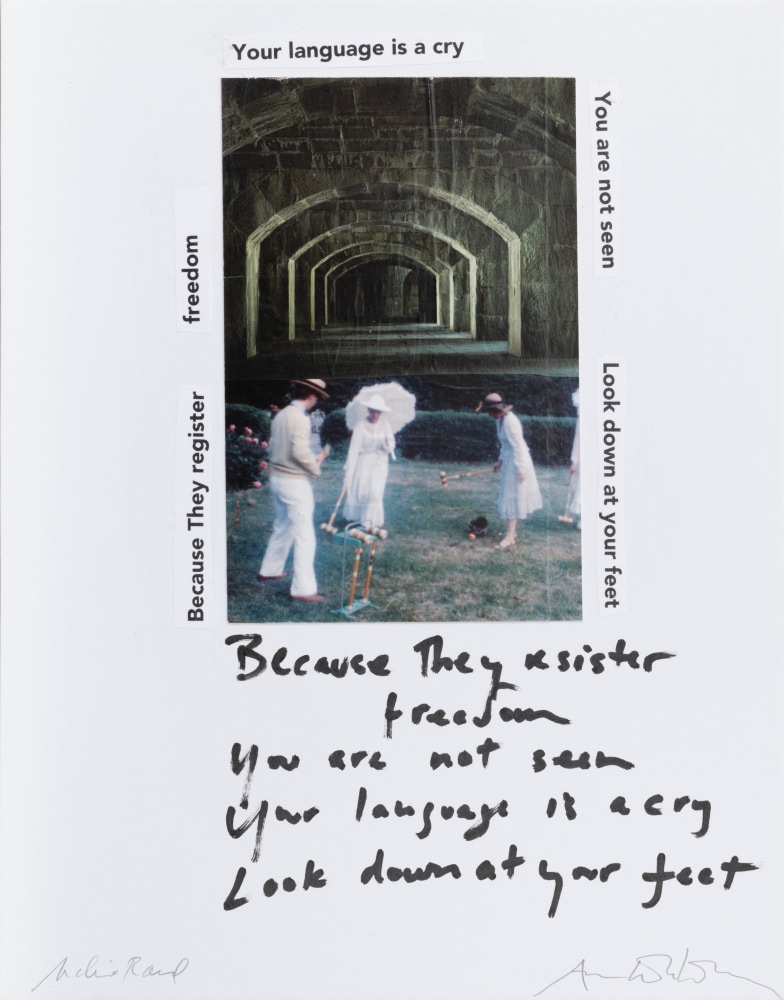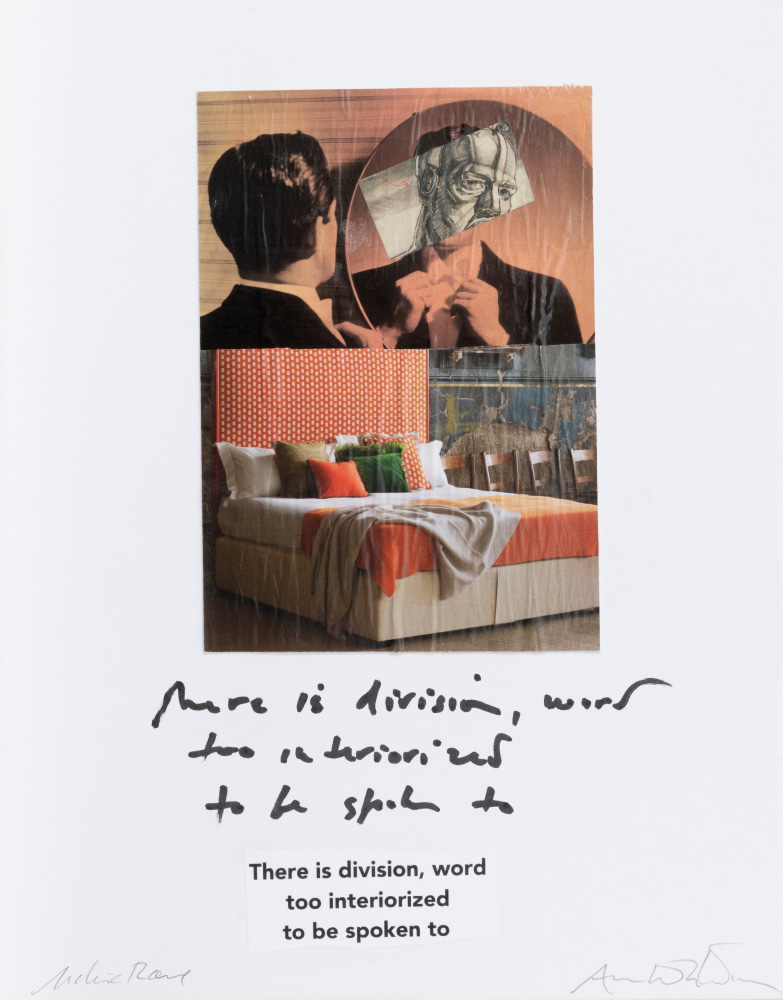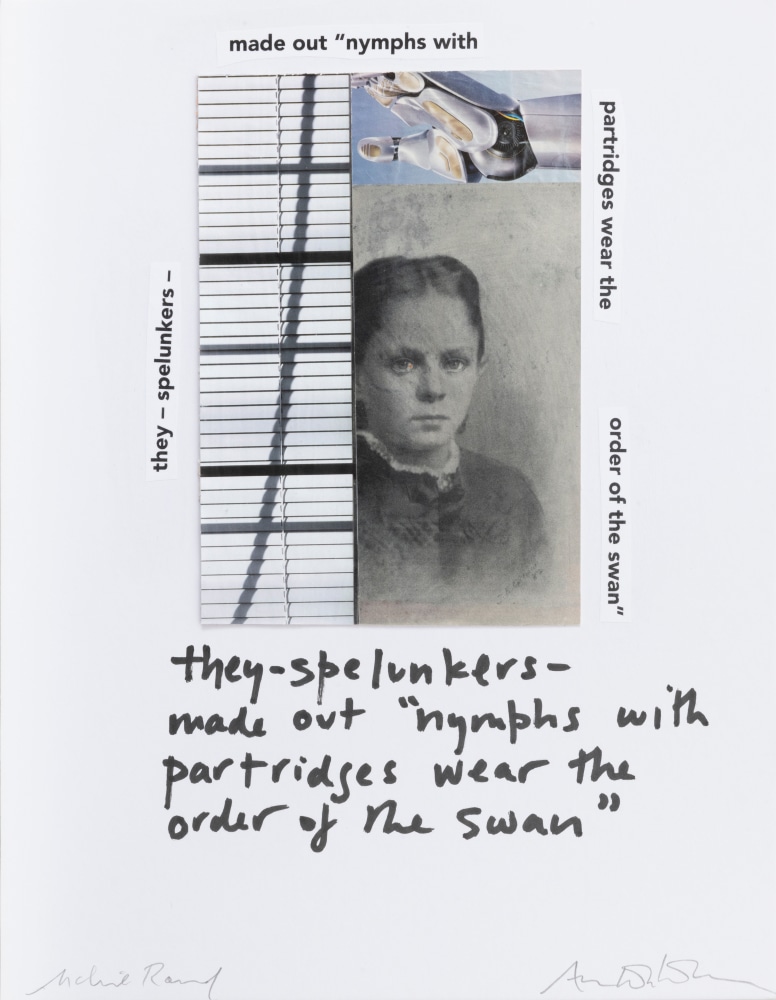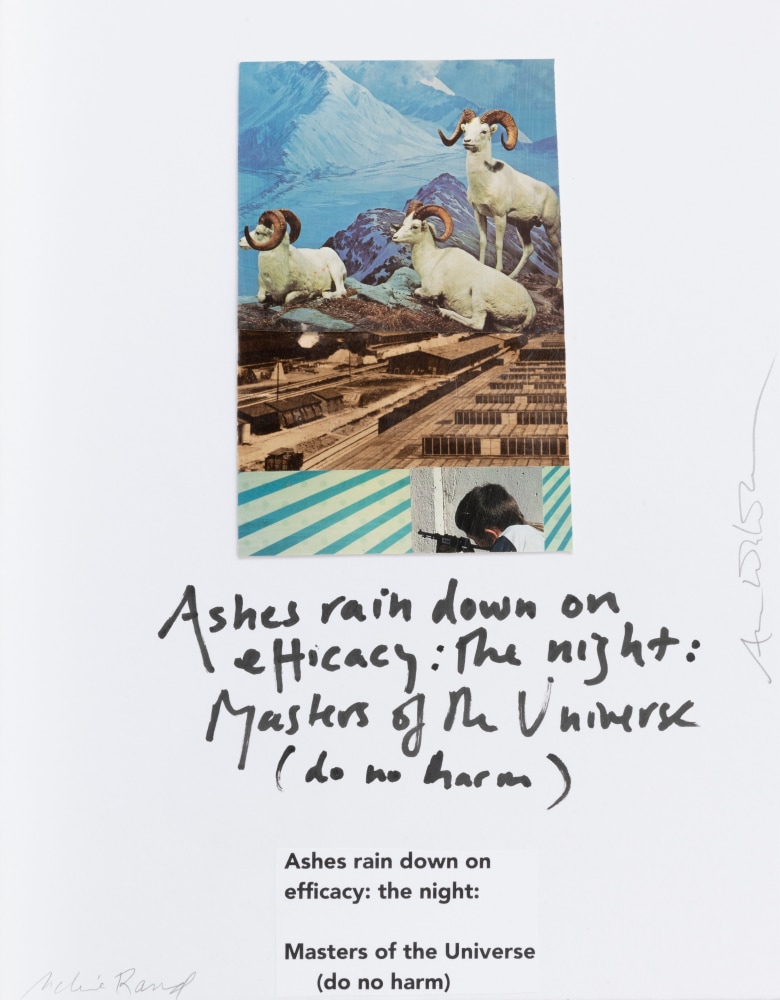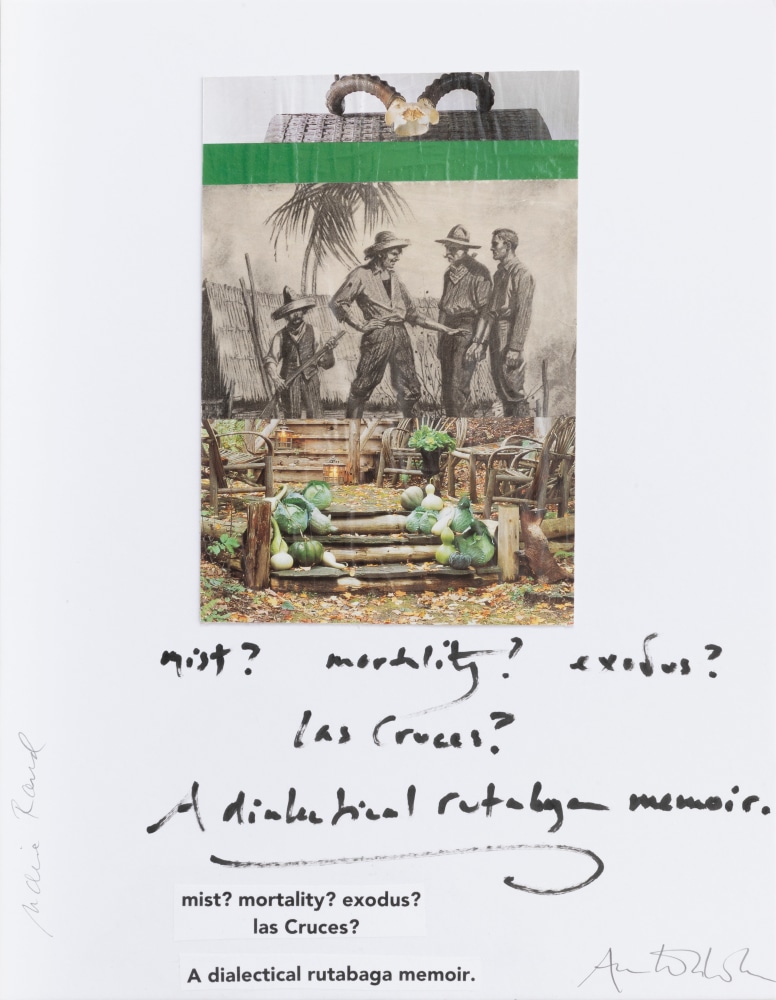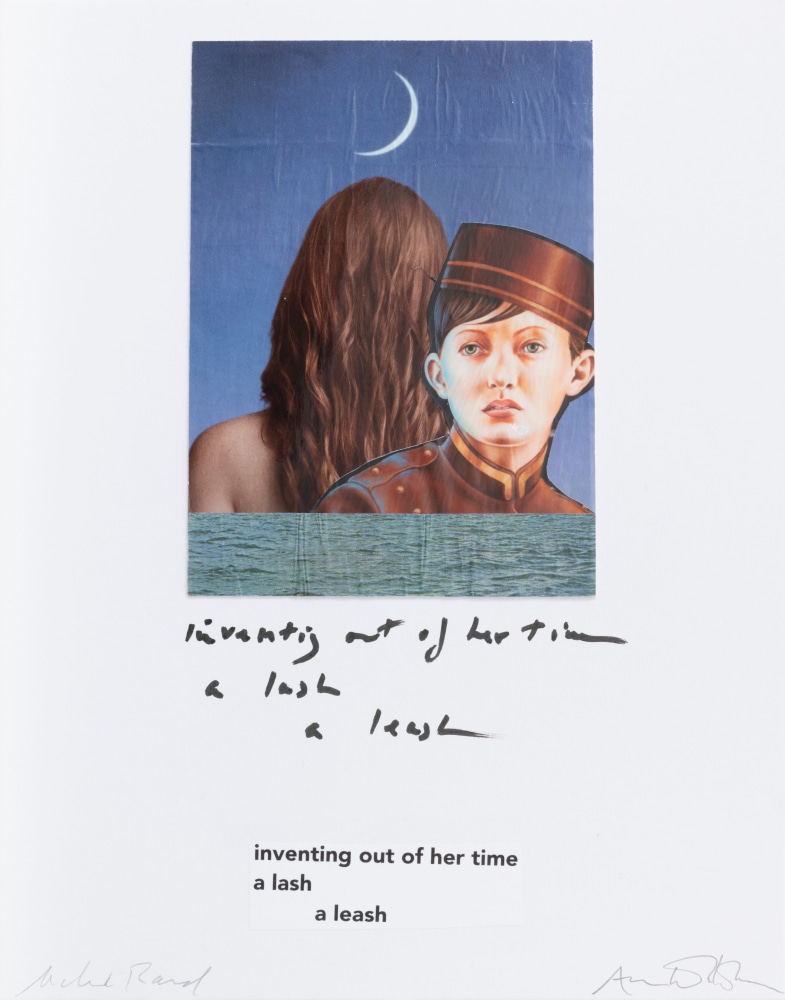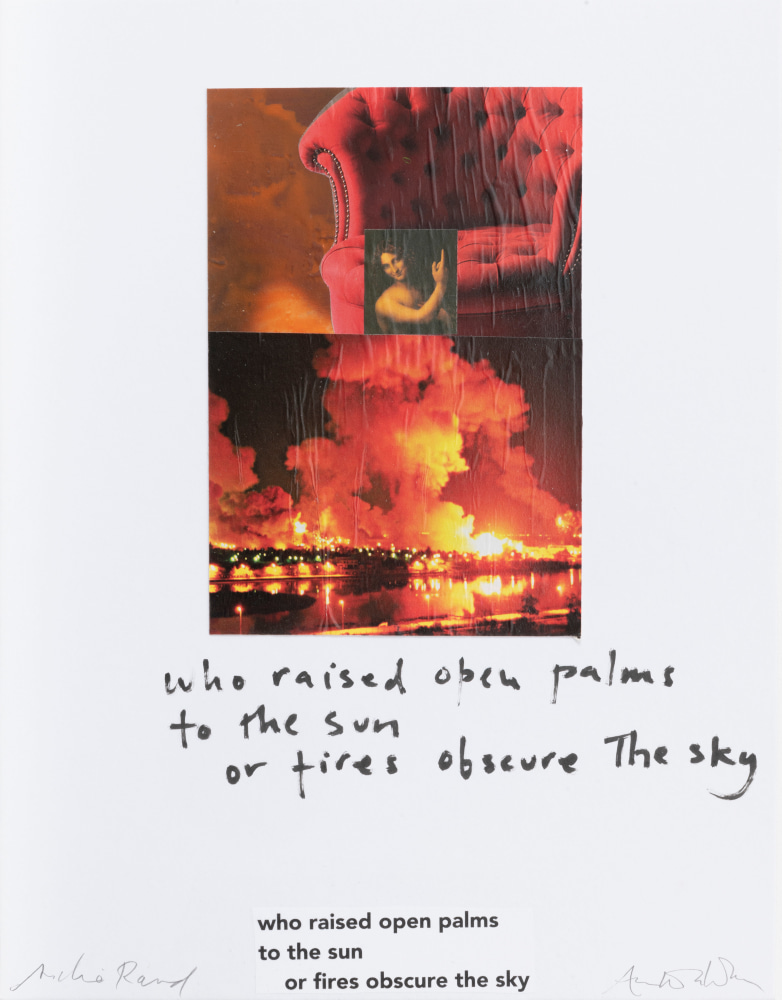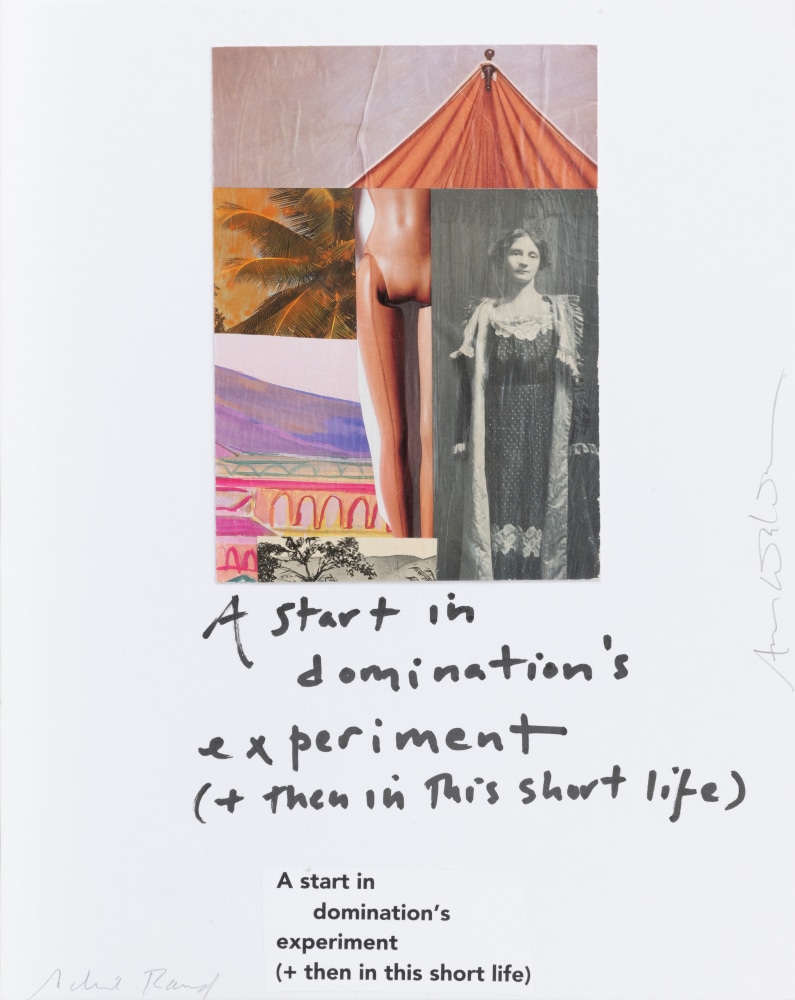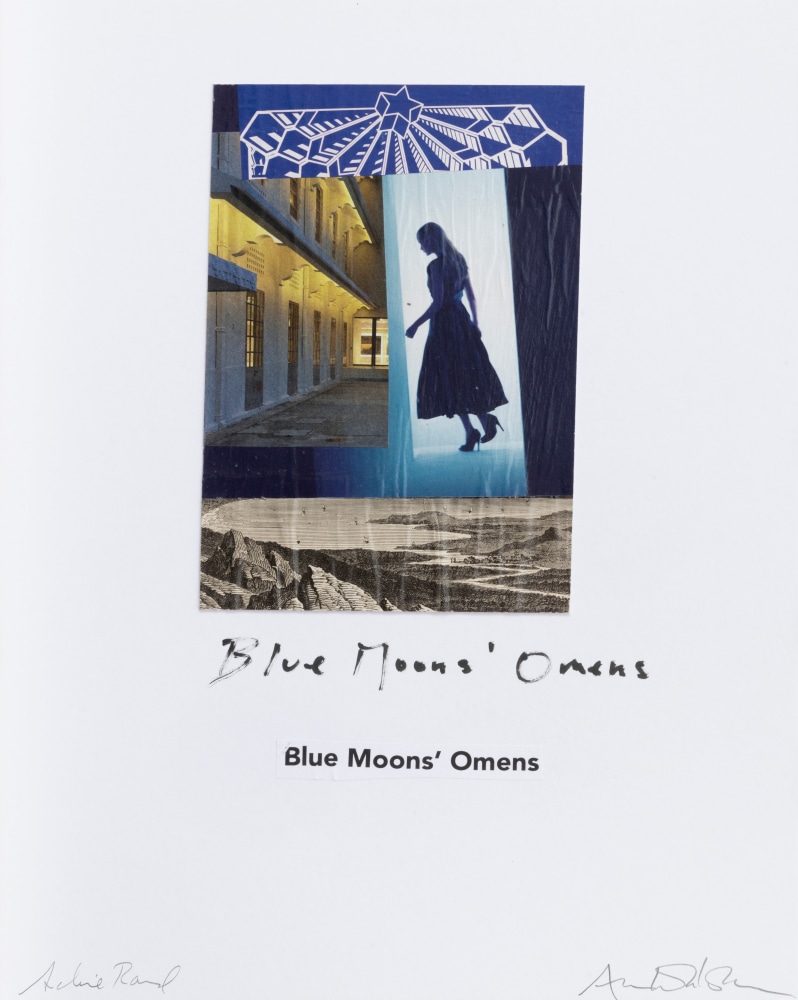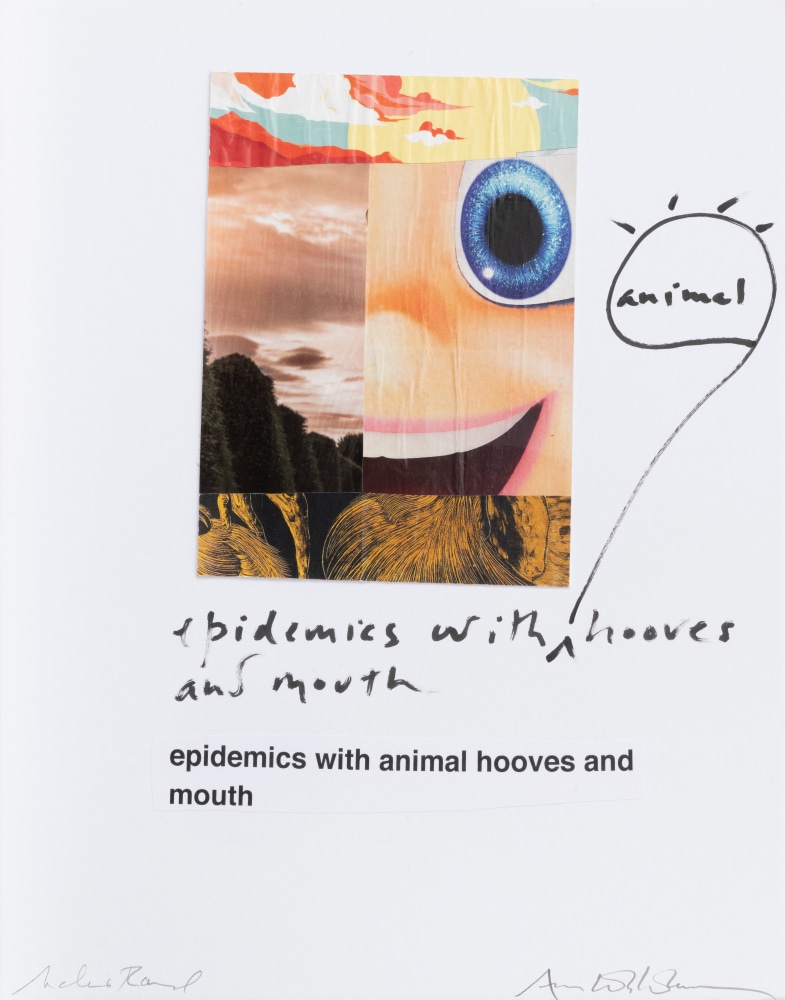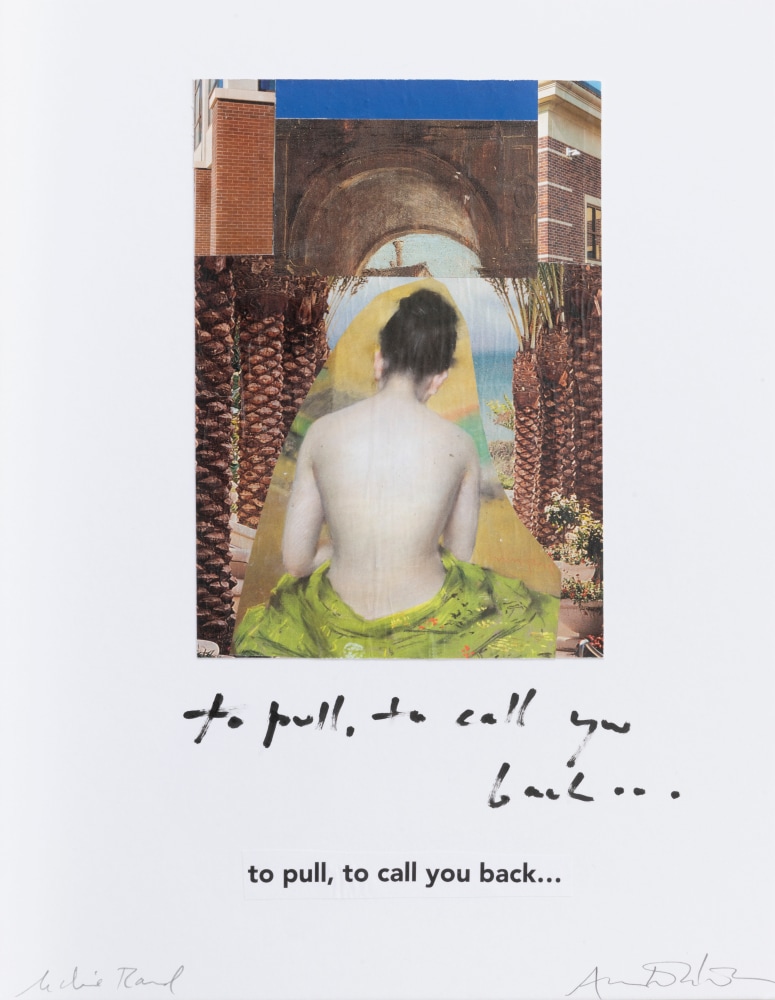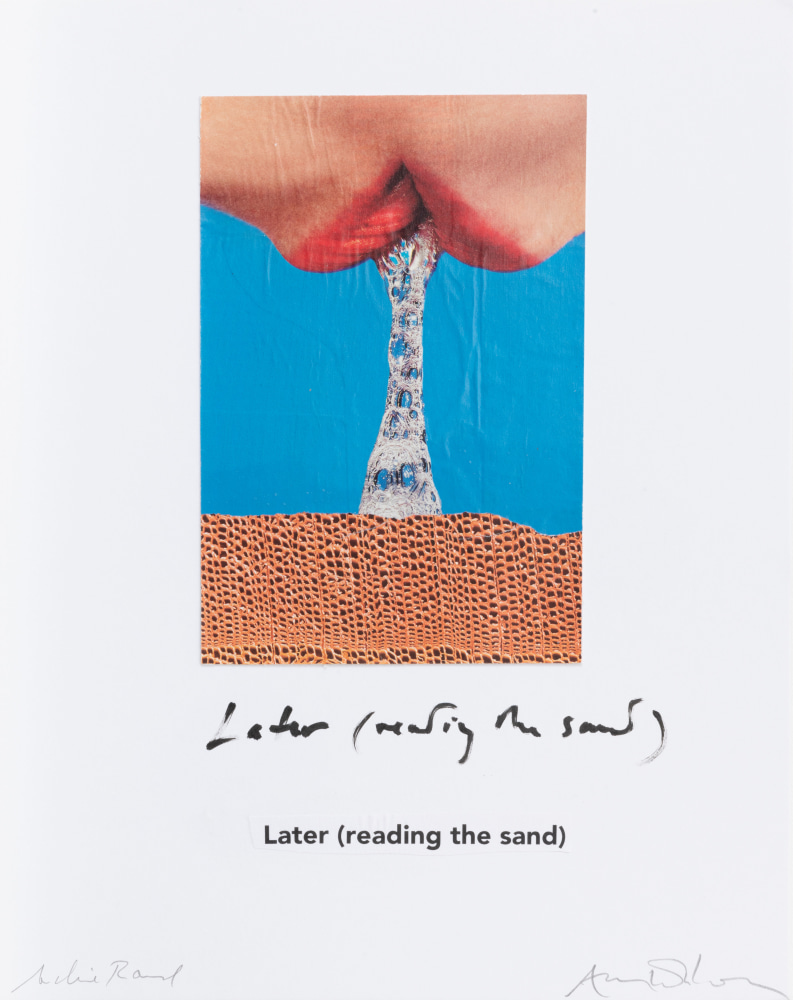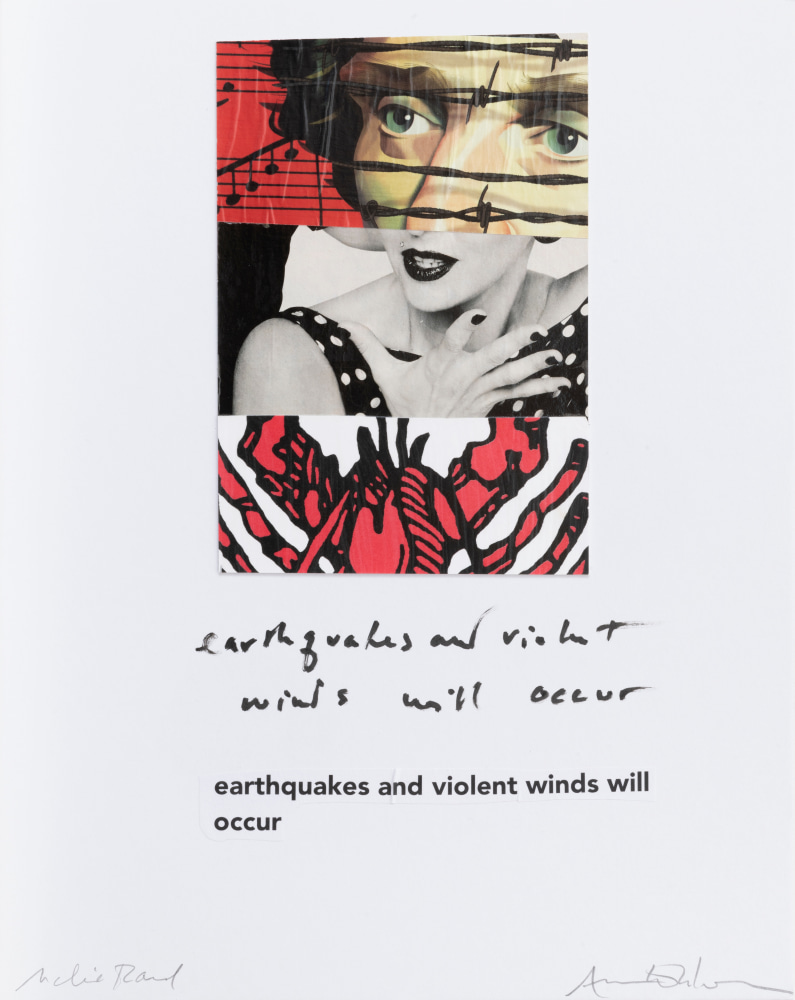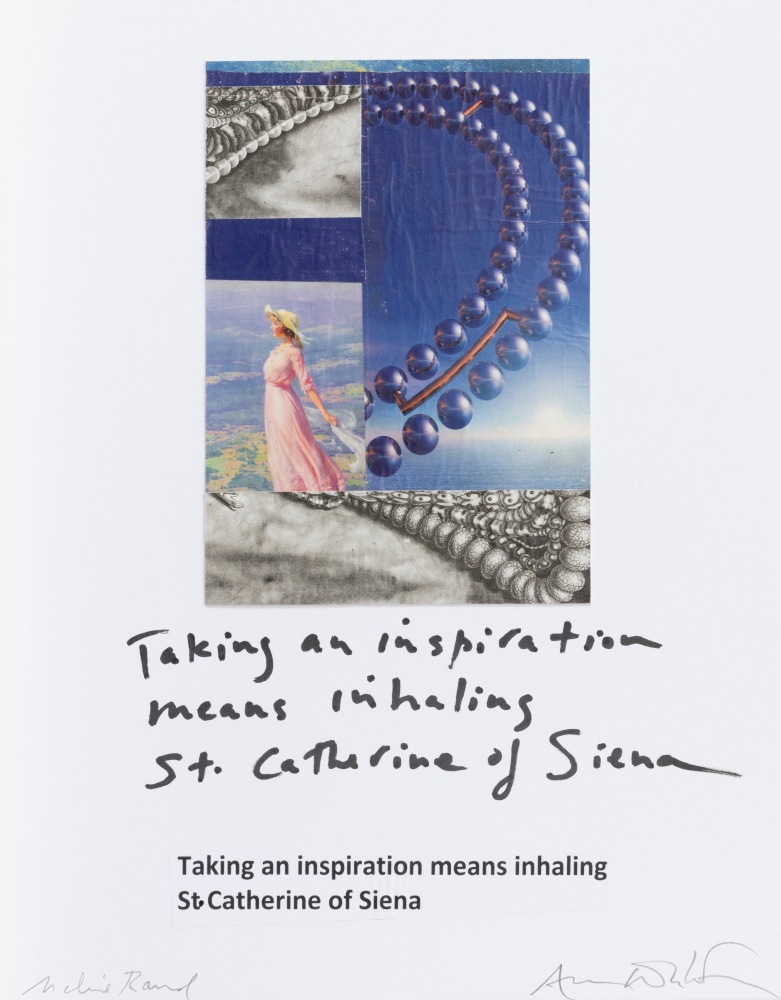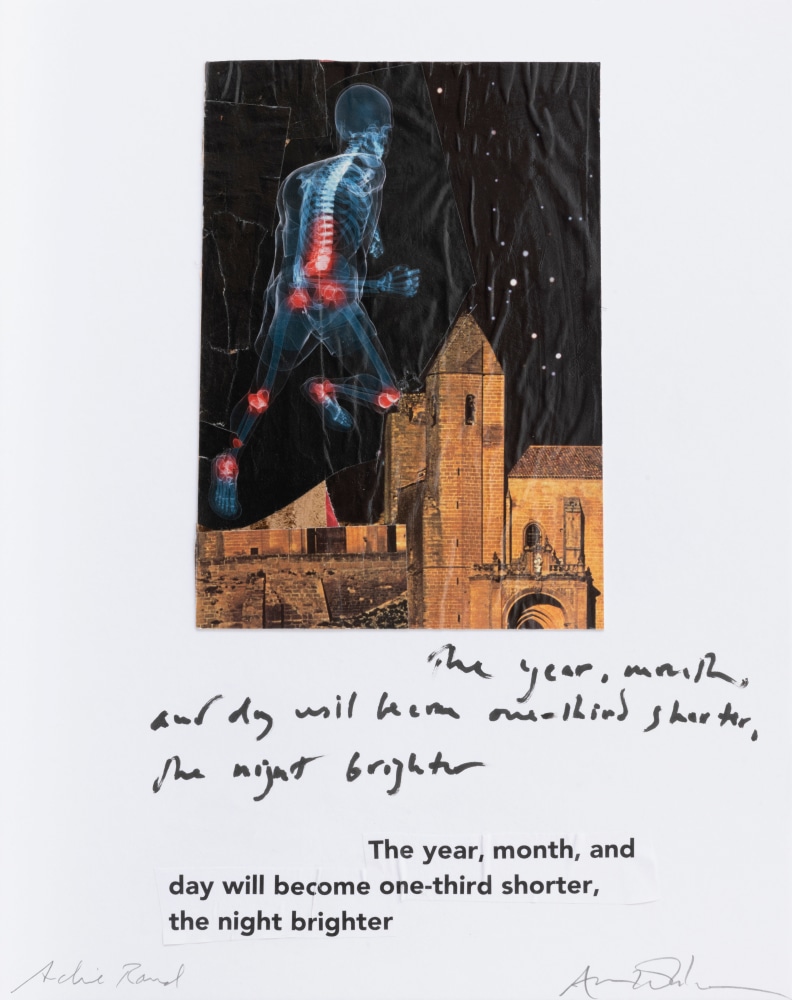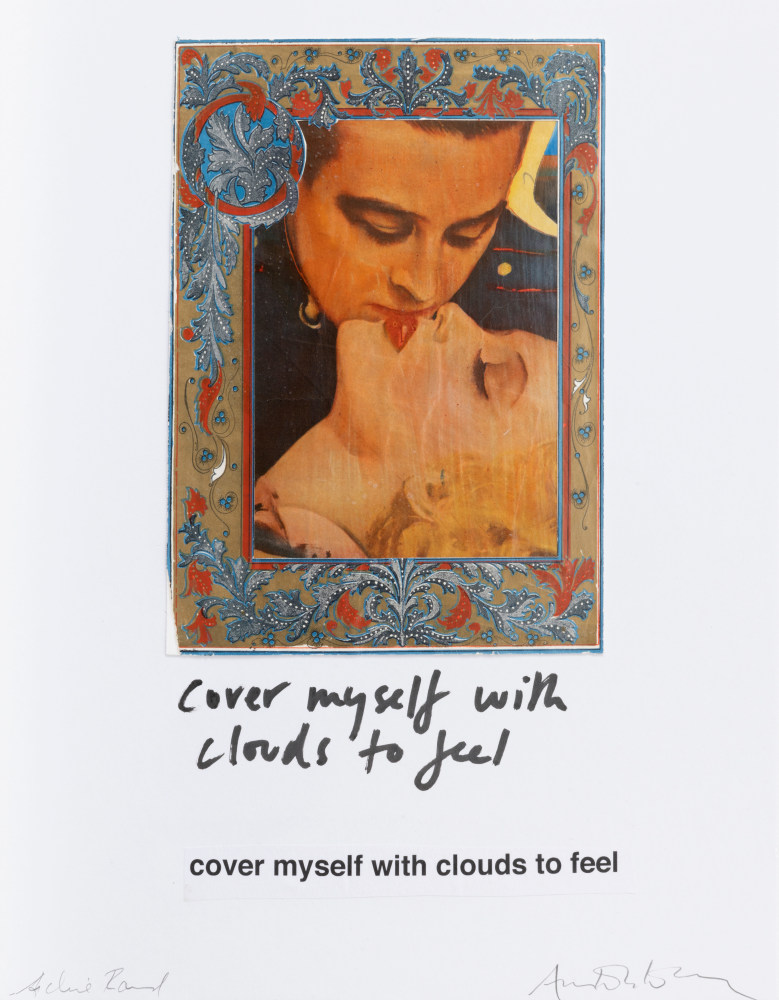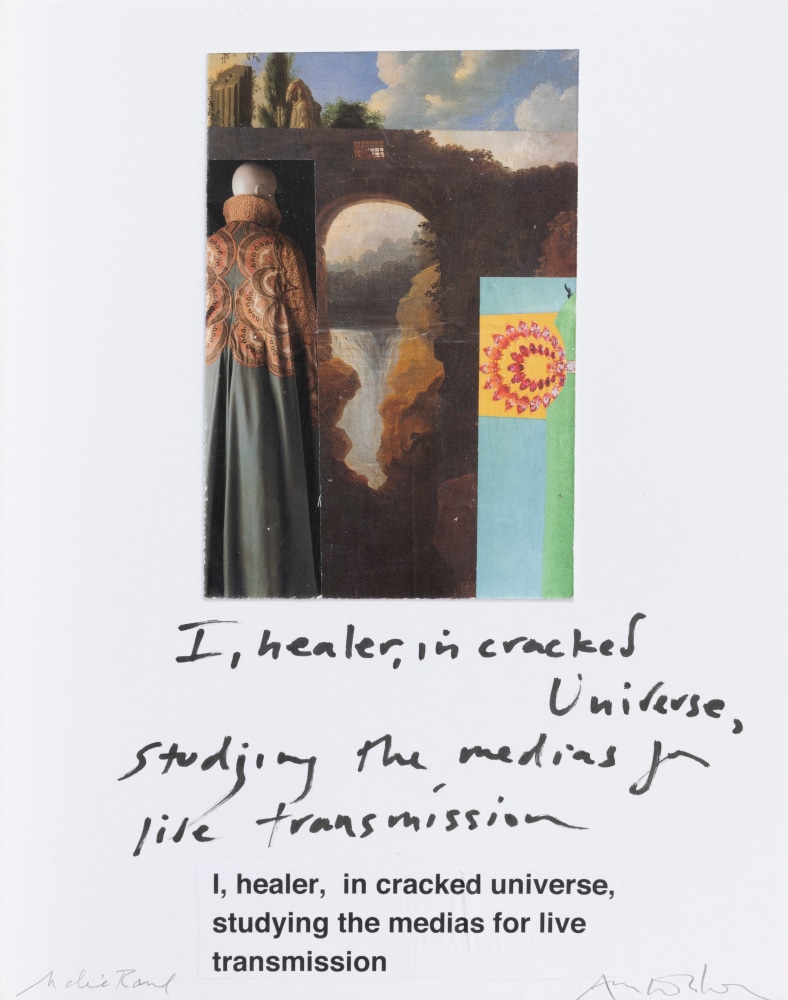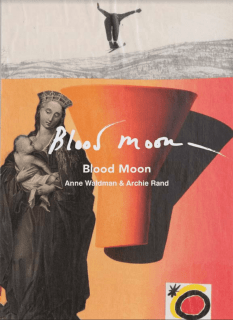
Archie Rand & Anne Waldman
Blood Moon
December 17th, 2021 - January 15th, 2022
Opening Reception: December 17th, 6-9pm
FOR IMMEDIATE RELEASE
Freight+Volume is thrilled to present Blood Moon, a unique, sequential series of poetry/collage collaborations co-authored by artist Archie Rand and poet Anne Waldman that extend word and image artworks to some of the most fascinating realms derived from the tradition of the graphic poem, on view at 39 Lispenard St. in the project room from December 17th, 2021 through January 15, 2022. We will host a public reception on December 17th, 6-9pm.
With a thrown-together feel, Archie Rand and Anne Waldman’s collaborative works are studies in synchronicity. The melding of word and image has a dynamic effect that abstracts from the visuality of Rand’s imagery; while Waldman’s poetic lines impart a wayward flavor in terms of which Rand’s visual agglutinations appear more piquant, savory, or sweet.
In themselves, Rand’s images are sectional landscapes bereft of any fixed location. A woman in handcuffs, a robed man standing next to a bridge, the profile of a girl in prayer—these flashes of imagery have little context, although they communicate with a visionary directness. Underscoring them with words, as Waldman does, Rand’s psychedelic visions, snapshots of our collective unconscious, become less like hallucinations and more like memories. This inverts the relationship lyricism generally has to imagery. While a lyrical consciousness generally overflows with emotional presence, in the works featured in Blood Moon lyricism fixes relationships where the mind would otherwise free-associate.
Turns of phrase take on a radically decontextualized meaning in relation to Rand’s images. One piece, for example, features three images, which overlap and rebuff each other in the manner of a collage. These images include the profile of a girl in prayer, a partial closeup of a woman touching her face in fear, and upright cacti from some desolate Spaghetti Western desert. Taken together, these three threads of imagery create a kind of surrealistic holy trinity, which might have prompted the text (situated below the images, like a caption): “Late Ordovician Mass Extinctions.” While this phrase generally has a precise scientific meaning, here “Ordovician” almost describes some otherworldly liturgy, while “extinctions” come to refer to ritualism as much as death.
What makes Rand’s and Waldman’s collaborative works so entrancing is the way they recreate a character, setting, or phrase whose meaning seems universal is scope. The symbiotic conflation of text and image produces an air of mystery—or at least something which suggests some hidden narrative. Depicting only glimpses of particular scenes and figures (a healer, a statue, a woman’s fingernails), the propulsive tissue of words and pictures takes on a power which awakens and soothes simultaneously. What results is as much a poem as an imagined landscape: a movement through different fields of energy stretched across storied panels of visual information.
Archie Rand (b. 1949) has occupied noteworthy space in the abstract, color-field, representational, and symbolist landscapes over the course of his more than fifty-year career. Recipient of numerous awards and honors, he first exhibited in 1966 at the Tibor de Nagy Gallery in New York after having attended the Art Students League and later receiving a Bachelor of Fine Arts in cinegraphics from Pratt Institute. Rand has collaborated with more poets than any living artist and has published significant projects with luminaries, such as Robert Creeley and John Ashbery. Rand is currently Presidential Professor of Art at Brooklyn College, having previously been Chair of the Department of Visual Arts at Columbia University.
Rand’s work has been the subject of retrospectives at venues ranging from the Cincinnati Contemporary Art Center to the Museo Palazzo Ducale of Genoa. Public collections include The Metropolitan Museum of Art, The Museum of Modern Art, The Whitney Museum of American Art, The Art Institute of Chicago, The San Francisco Museum of Modern Art, The Smithsonian Institution, The Brooklyn Museum, The Carnegie Museum of Art, The Bibliotheque Nationale de France, The Victoria and Albert Museum in London, and numerous university archives. Rand lives and works in New York City.
Anne Waldman (b. 1945) is an internationally recognized and acclaimed poet who has been an active member of the “Outrider” experimental poetry community, a culture she has helped create and nurture for over four decades as writer, editor, teacher, performer, magpie scholar, infrastructure curator, and cultural/political activist. Her poetry is recognized in the lineage of Whitman and Ginsberg, and in the Beat, New York School, and Black Mountain trajectories of New American Poetry.
She is the author of more than 60 books, including the mini-classic Fast Speaking Woman, published by Lawrence Ferlinghetti’s City Lights Books in San Francisco, a collection of essays entitled Vow to Poetry, and several selected poems editions including Helping the Dreamer, Kill or Cure, and In the Room of Never Grieve. She has concentrated on the long poem as a cultural intervention with such projects as Marriage: A Sentence, Structure of The World Compared to a Bubble, Manatee/Humanity. Her monumental anti-war feminist epic, The Iovis Trilogy: Colors in the Mechanism of Concealment, a 25 year project, won the Pen Center Award for Poetry. Waldman’s major publishers are Penguin Poets and Coffee House Press.
Her most recent books are Sanctuary (Spuyten Duyvil, 2020), Songs of the Sons and Daughters of Buddha: Enlightenment Poems from the Theragatha and Therigatha (translated by Andrew Schelling and Anne Waldman, Shambhala Publications, 2020), Trickster Feminism (Penguin Books, 2018), Extinction Aria (Pied Oxen, 2017), and Voice’s Daughter of a Heart Yet To Be Born (2016). Her forthcoming books include Bard, Kinectic (Coffee House Press, 2022) and Mesopotopia (Penguin, 2023). Waldman divides her time between New York City and Boulder, Colorado.

